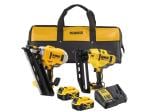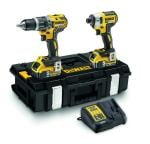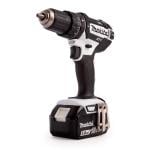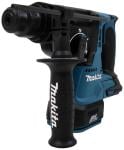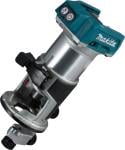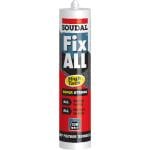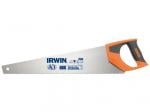Circular Saw Buying Guide
Posted on 05/01/24
An Introduction to Buying Circular Saws
When embarking on a journey to purchase a circular saw, you're not just buying a tool; you're investing in efficiency, precision, and versatility. Circular saws are quintessential for anyone involved in woodworking, construction, or even ambitious DIY projects.This guide is designed to navigate you through the intricate world of circular saws, ensuring that you make an informed decision that best suits your needs. A circular saw, characterized by its toothed or abrasive disc or blade, can make straight cuts through various materials with remarkable accuracy and speed.
The market offers a diverse range of circular saws, each catering to different requirements. From compact, lightweight models perfect for simple home projects to more robust and powerful saws for heavy-duty construction tasks, the choices are plentiful. Understanding the nuances of circular saws is crucial.
This includes comprehending different types, such as sidewinders and worm drive saws, and recognizing the significance of blade size, power output, and safety features. Furthermore, the debate between corded and cordless models adds another layer of consideration, balancing the convenience of portability against the consistent power of a corded connection.
This guide aims to simplify these complexities, offering clear, concise information and expert insights. Whether you're a professional tradesman looking for a reliable tool to withstand rigorous use or a home enthusiast needing a saw for occasional projects, we cover all bases. From detailed product analyses and comparisons to user experiences and maintenance tips, this guide is your one-stop-shop for all things related to circular saws.
Embark on this journey with us as we delve into the world of circular saws, providing you with the knowledge and confidence to select a tool that not only meets your project requirements but also enhances your craftsmanship.
Types and Variations of Circular Saws
When it comes to circular saws, understanding the different types available is crucial in selecting the right tool for your needs. Each type offers unique features and advantages suited to various applications. Here are the primary types and variations of circular saws you'll encounter:Sidewinder Circular Saws (Direct Drive)
- Description: Sidewinder, or direct drive, saws have the motor mounted alongside the blade. This design results in a compact and lightweight saw that is easy to handle and manoeuvre.
- Best For: General carpentry, DIY projects, and overhead tasks. Their lightweight nature makes them ideal for long-duration use and when working in confined spaces.
- Key Features: Enhanced portability, ease of use, and typically a higher RPM (revolutions per minute) compared to other types.
Worm Drive Saws
- Description: In a worm drive saw, the motor is positioned behind the blade, resulting in a longer, narrower tool. This configuration provides more torque and smoother, more precise cuts.
- Best For: Heavy-duty tasks like cutting through dense materials, framing, and major renovation projects. They are preferred for their power and durability.
- Key Features: Increased torque, better cutting power, and the ability to handle longer, more demanding cuts. They are generally heavier than sidewinders.
Cordless Circular Saws
- Description: These saws are powered by rechargeable batteries, offering the ultimate in portability and convenience. Modern advancements in battery technology have significantly improved their performance.
- Best For: Jobs where accessibility to a power outlet is a challenge, and for quick cuts where setting up a corded saw might be cumbersome.
- Key Features: Portability and freedom of movement, variable battery life depending on model and battery type. They are increasingly rivaling corded saws in power and efficiency.
Hypoid Circular Saws
- Description: Hypoid saws are similar to worm drive saws but feature a hypoid gear, which does not require as much maintenance and offers a more efficient transfer of power.
- Best For: Heavy-duty cutting tasks where a durable and powerful saw is needed. They excel in high-torque applications and are less likely to bog down under load.
- Key Features: Maintenance-free hypoid gears, enhanced power transfer, and durability. They tend to be heavier and more expensive but offer longevity and robust performance.
Compact and Mini Circular Saws
- Description: These are smaller, more maneuverable versions of the standard circular saw. They are designed for light-duty tasks and can be ideal for hobbyists or for precise, small-scale work.
- Best For: Quick cuts, small projects, and work in tight spaces. They are perfect for users who find regular circular saws too bulky or heavy.
- Key Features: Lightweight, easy to control, and suitable for a variety of materials including wood, metal, and tile, depending on the blade used.
Key Features to Consider When Buying a Circular Saw
Selecting the right circular saw involves understanding various features that determine its performance, usability, and safety. Here’s a rundown of the key features to consider:Blade Size
- Importance: The size of the blade dictates the maximum depth of cut a saw can achieve. Common sizes are 6 ½ inches and 7 ¼ inches.
- Consideration: Choose a size based on the thickness of materials you frequently work with. Larger blades allow deeper cuts.
Power Output
- Corded Saws: Measured in Amperes (Amps). Higher amperage equates to more cutting power.
- Cordless Saws: Measured in Volts (V). Higher voltage indicates more power, but also more weight from the battery.
- Consideration: Assess the type of work you’ll be doing. More intensive cutting requires higher power output.
Corded vs. Cordless
- Corded: Offers consistent power supply and is generally more powerful.
- Cordless: Provides mobility and ease of use. Ideal for sites without immediate power access.
- Consideration: Weigh the importance of portability against the need for continuous power.
Ergonomics and Comfort
- Importance: Ergonomics affect how comfortably you can use the saw, especially for extended periods.
- Consideration: Look for features like rubberized grips, anti-vibration technology, and a well-balanced design.
Depth and Bevel Adjustments
- Depth Adjustment: Allows you to control how deep the blade cuts into the material.
- Bevel Capacity: Enables the saw to make angled cuts, usually up to 45 degrees or more.
- Consideration: Essential for versatility in cutting applications. Adjustable settings are particularly important for complex projects involving angle cuts.
Safety Features
- Blade Guard: A retractable cover for the blade, offering protection when the saw is in use or idle.
- Electric Brake: Stops the blade quickly once the trigger is released.
- Lock-Off Switch: Prevents accidental start-up.
- Consideration: Safety should be a top priority. Features that reduce the risk of injury are crucial.
Additional Features
- Laser Guide: Projects a straight line on the material for precise cutting.
- LED Lights: Enhance visibility in low-light conditions.
- Dust Blower/Port: Keeps the cutting line clear of sawdust.
- Consideration: While not essential, these features can improve accuracy and convenience.
Circular Saws: Corded vs. Cordless Comparison
When selecting a circular saw, one of the fundamental decisions you’ll face is choosing between a corded and a cordless model. Each type offers distinct advantages and drawbacks, and understanding these can help you make the best choice for your needs.Corded Circular Saws
- Power and Consistency: Corded saws typically offer more power (measured in amps) and can maintain this power consistently throughout extended use. They are ideal for heavy-duty cutting tasks and prolonged use.
- Dependence on Power Source: They require a nearby electrical outlet, which can limit mobility and may necessitate the use of extension cords for larger workspaces.
- Weight and Handling: Often lighter than their cordless counterparts (as they don’t carry a battery), which can reduce fatigue during long periods of use.
Cordless Circular Saws
- Portability and Convenience: The biggest advantage of cordless models is the freedom of movement they offer. They are ideal for job sites where access to electrical outlets is limited or for quick cuts without the hassle of a cord.
- Battery Life and Power: Modern cordless saws have significantly improved in terms of power and battery life, thanks to advancements in battery technology (measured in volts). However, they may still fall short in power compared to corded models, and work time is limited by battery life.
- Weight and Size: The inclusion of a battery makes cordless saws generally heavier. This can impact handling and comfort over extended use.
- Cost Consideration: Cordless saws can be more expensive due to battery and charger costs, and batteries may need replacement over time.
Making the Right Choice
- Consider Your Work Environment: If you typically work in a setting with ready access to power and undertake heavy or prolonged cutting tasks, a corded saw might be more suitable. For work at varied locations, especially outdoors or in new construction areas without power setup, a cordless saw offers the necessary flexibility.
- Evaluate the Type of Projects: For detailed, intensive projects that require consistent power, a corded saw is preferable. For lighter, quick tasks, and where convenience is a priority, a cordless model is ideal.
- Factor in Future Costs: With cordless saws, consider the long-term costs of battery replacements and the potential need for multiple batteries for uninterrupted work.
Buying a Circular Saw: Overview of Brands and Models
When purchasing a circular saw, the brand and model you choose can significantly impact the tool's performance, durability, and suitability for your specific needs. Here’s an overview of some leading brands and their notable models to consider:DeWalt
- Reputation: Known for durability and high performance, DeWalt is a favorite among professionals and serious DIYers.
- Notable Models:
- DeWalt DWE575SB: A lightweight yet powerful saw, known for its user-friendly design and electric brake for safety.
- DeWalt DCS391B: A cordless model offering portability without sacrificing power, part of their 20V MAX lineup.
Makita
- Reputation: Makita is praised for its innovative technology and quality craftsmanship.
- Notable Models:
- Makita 5007MGA: Features a magnesium components for lightweight and durability, with a powerful 15-amp motor.
- Makita XSS02Z: A cordless model known for its balance, ease of use, and part of the extensive 18V LXT battery platform.
Milwaukee
- Reputation: Milwaukee is renowned for making heavy-duty tools suitable for rigorous professional use.
- Notable Models:
- Milwaukee 6390-21: Offers a comfortable grip and is well-balanced for ease of use, with a 15-amp motor.
- Milwaukee M18 2630-20: A robust cordless option in their M18 lineup, known for its durability and power.
Bosch
- Reputation: Bosch stands out for precision engineering and reliability.
- Notable Models:
- Bosch CS10: A 15-amp saw that delivers a great blend of power and user-friendly features.
- Bosch CCS180B: A competent cordless model offering convenience and reliable performance.
Ryobi
- Reputation: Ryobi offers affordable tools suitable for homeowners and occasional users.
- Notable Models:
- Ryobi P507: An inexpensive yet capable cordless option, part of the ONE+ battery system.
- Ryobi CSB125: A budget-friendly corded option, good for light-duty tasks.
SKIL
- Reputation: Known for reliability and cost-effectiveness, SKIL is a solid choice for DIY enthusiasts.
- Notable Models:
- SKIL 5280-01: An affordable yet powerful saw with user-friendly features like a laser guide.
Buying a Circular Saw: Price Range and Budget Options in the UK
When selecting a circular saw in the UK, understanding how the price correlates with features, quality, and performance is essential. The market offers a variety of options to suit different budgetary needs, from affordable entry-level saws to high-end professional models.Entry-Level Circular Saws (£25 to £65)
- Characteristics: These saws are typically less powerful with basic features, suitable for light-duty tasks. Ideal for casual DIY enthusiasts or occasional use.
- Considerations: While these saws are budget-friendly, they may lack the durability or precision for more demanding tasks. Brands like Black+Decker and Ryobi have models in this range that offer decent performance for the price.
Mid-Range Circular Saws (£65 to £120)
- Characteristics: Mid-range saws offer a good balance between cost and performance. They typically have adequate power for most DIY tasks and may include additional features like improved ergonomics and dust extraction.
- Considerations: Suitable for serious DIYers and general handymen who need reliable performance. Brands like SKIL and Craftsman provide good value in this segment.
High-End Circular Saws (£120 to £250 and above)
- Characteristics: These saws are built for professional use, featuring robust motors, advanced safety features, and the durability to withstand rigorous use. They often come with premium features such as electric brakes, magnesium construction, and ergonomic designs.
- Considerations: These saws are an investment for professionals requiring consistent power and precision. Top-tier brands like DeWalt, Makita, and Milwaukee offer high-quality options in this range.
Specialty and Cordless Circular Saws
- Price Range: Can vary, with some advanced cordless models exceeding £250, especially those equipped with the latest lithium-ion batteries.
- Considerations: Specialty saws designed for specific materials or intricate cuts and high-performance cordless models often come with a higher price tag, offering the latest in portability and technology.
Tips for Choosing Within Your Budget
- Assess Your Needs: Align the saw with your most common tasks. Avoid overspending on features you won't frequently use.
- Read Reviews and Compare: Utilize user reviews and professional comparisons to gauge the value of each saw.
- Consider Total Cost of Ownership: For cordless models, factor in the long-term costs of batteries and chargers if they're not included.
Pros and Cons of Circular Saws
Circular saws are a staple in woodworking and construction due to their versatility and efficiency. However, like any tool, they come with their own set of advantages and limitations. Understanding these will help you decide if a circular saw is the right tool for your needs.Pros of Circular Saws
- Versatility: Capable of making straight, cross, and bevel cuts in a variety of materials including wood, metal, and plastic.
- Portability: Especially true for cordless models, circular saws are easily transportable and convenient for use on different job sites or around the home.
- Power and Efficiency: Offers quick and efficient cutting, which is particularly beneficial in time-sensitive projects or when handling large volumes of material.
- Precision: With the right blade and steady handling, circular saws can deliver precise and clean cuts.
- Adjustable Settings: Many models allow for depth and bevel adjustments, making them suitable for a range of applications.
Cons of Circular Saws
- Safety Concerns: The exposed blade can pose a risk, requiring careful handling and adherence to safety protocols.
- Learning Curve: Achieving precision and mastering different cuts can be challenging for beginners.
- Limited Cut Types: Primarily designed for straight cuts; not suitable for intricate shapes or tight curves, which are better served by other types of saws like jigsaws.
- Dust and Debris: Cutting with circular saws can generate significant dust and debris, necessitating good cleanup practices and possibly additional dust extraction equipment.
- Noise Level: They can be quite loud, especially the more powerful models, requiring hearing protection during use.
Conclusion
A circular saw is an invaluable tool for both professional builders and DIY enthusiasts, offering a blend of power, precision, and versatility. However, it is important to consider the learning curve and safety aspects. Understanding its capabilities and limitations will ensure that you get the most out of your circular saw while working safely and efficiently.Circular Saws: Maintenance and Care Tips
Proper maintenance and care are essential for ensuring your circular saw remains in good working condition and lasts a long time. Regular upkeep not only extends the life of your saw but also ensures safety and efficiency. Here are some key tips for maintaining and caring for your circular saw:Regular Blade Checks and Replacements
- Inspection: Regularly inspect the blade for dullness, warping, or damage. A dull or damaged blade can make the saw work harder and can be dangerous.
- Replacement: Replace the blade as soon as you notice significant wear or damage. Always choose the right blade type for the material you are cutting.
Cleaning After Use
- Sawdust Removal: Sawdust and debris can accumulate on and around the blade and in the motor housing. Clean this debris after each use to prevent build-up.
- General Cleaning: Use a soft brush or cloth to clean the saw. Avoid using water or liquid cleaners which can damage the motor and electrical components.
Lubrication
- Moving Parts: Keep the moving parts of the saw, such as the blade guard mechanism and height and bevel adjustments, well-lubricated and moving smoothly.
- Appropriate Lubricants: Use only lubricants recommended by the manufacturer to avoid gumming up the parts.
Checking and Tightening
- Loose Components: Regularly check for loose screws, bolts, or any other components. A loose part can affect the saw’s accuracy and can be a safety hazard.
- Adjustments: Ensure that the adjustments for depth and bevel settings are tight and accurate.
Battery Care (for Cordless Models)
- Charging: Follow the manufacturer’s instructions for charging and storing batteries.
- Longevity: To prolong battery life, avoid leaving it on the charger for extended periods after it’s fully charged.
Safe Storage
- Proper Storage: Store the saw in a dry, clean place. Protect it from dust and moisture when not in use.
- Blade Protection: When storing, ensure the blade is protected or retracted to prevent accidental injuries or damage to the blade.
Regular Safety Checks
- Safety Features: Regularly test safety features like the blade guard and electric brake to ensure they are functioning correctly.
Glossary of Terms for Circular Saws
Ampere (Amp): A unit of electric current. In circular saws, higher amperage indicates a more powerful motor, enabling the saw to cut through tougher materials more easily.Arbor: The shaft on which the saw blade is mounted. The size of the arbor determines the size of the blade that can be used with the saw.
Bevel Cut: A cut made at an angle other than 90 degrees to the face of the material. Bevel capacity is a key feature of many circular saws, allowing for angled cuts.
Blade Capacity: Refers to the maximum diameter of the blade that the saw can accommodate. This directly influences the maximum depth of cut the saw can achieve.
Blade Guard: A safety feature that covers the blade to protect the user from direct contact with the blade during operation and when the saw is not in use.
Corded Circular Saw: A circular saw that is powered by electricity via a cord plugged into an electrical outlet, offering consistent power output for prolonged use.
Cordless Circular Saw: A battery-powered circular saw offering portability and ease of use without the restriction of a power cord.
Depth of Cut: Refers to the maximum depth the saw can cut. This is typically adjustable on most circular saws and is dependent on the blade capacity and the saw's design.
Direct Drive (Sidewinder): A type of circular saw where the motor is located alongside the blade, providing a compact and lightweight design.
Dust Port/Dust Blower: An attachment or built-in feature that helps to remove sawdust from the cutting path, improving visibility and cleanliness.
Electric Brake: A safety feature that rapidly stops the blade from spinning when the trigger is released, reducing the risk of accidents.
Foot Plate (Shoe): The flat base of the circular saw that rests on the material being cut, providing stability and guidance during the cut.
Kerf: The width of the cut made by the saw blade. It is determined by the thickness of the blade.
Laser Guide: An additional feature in some circular saws that projects a laser line along the cut line, enhancing accuracy and visibility.
Rip Cut: A type of cut that goes along with the grain of the wood, typically made with the wood's length.
Worm Drive: A type of circular saw where the motor is positioned behind the blade, providing increased torque and better cutting power for heavy-duty applications.
This glossary covers the fundamental terms related to circular saws, providing a helpful reference for anyone looking to understand more about these essential tools.
Circular Saws FAQs
Q: What is the most common size of blade for a circular saw?A: The most common blade size for a circular saw is 7 ¼ inches, which offers a good balance of cutting depth and versatility.
Q: Can a circular saw cut through metal?
A: Yes, a circular saw can cut through metal when equipped with the appropriate blade, such as a carbide-tipped or abrasive metal-cutting blade.
Q: What's the difference between a sidewinder and a worm drive circular saw?
A: A sidewinder (or direct drive) saw has the motor located beside the blade, making it lightweight and compact. A worm drive saw has the motor at the rear, providing more torque and suited for heavy-duty cutting.
Q: Is a corded or cordless circular saw better?
A: It depends on your needs. Corded saws offer continuous power and are generally more powerful, while cordless saws provide mobility and are better for areas without easy access to a power outlet.
Q: How do I maintain a circular saw?
A: Maintain a circular saw by regularly cleaning it, keeping the blade sharp, ensuring all parts are tight and functioning, and lubricating moving parts as needed.
Q: What safety equipment should I use when operating a circular saw?
A: Always use safety glasses, hearing protection, and a dust mask. For certain tasks, additional protection like gloves or a face shield may be necessary.
Q: Can I use a circular saw to make bevel cuts?
A: Yes, many circular saws have bevel adjustment capabilities allowing you to make bevel cuts at various angles.
Q: How do I choose the right blade for my circular saw?
A: Choose a blade based on the material you are cutting and the type of cut you need. For wood, use a blade with more teeth for a smoother cut and fewer teeth for faster, rougher cuts.
Q: Can a circular saw be used to make plunge cuts?
A: Yes, some circular saws can make plunge cuts, but it requires skill and practice. Always ensure the saw has a plunge-cut feature for safety and efficiency.
Q: What is the maximum depth a circular saw can cut?
A: The maximum depth a circular saw can cut is determined by the blade diameter. A standard 7 ¼ inch blade can typically cut to a depth of about 2 ½ inches at 90 degrees.


